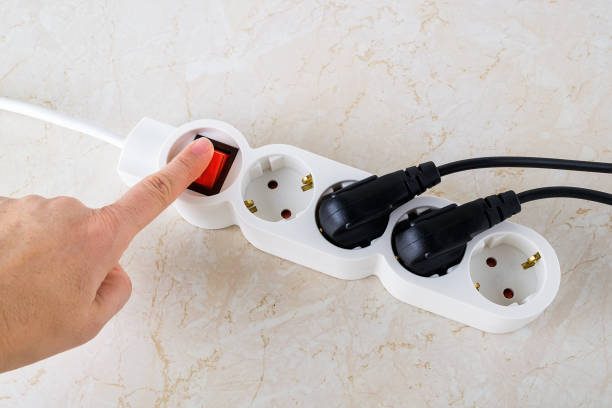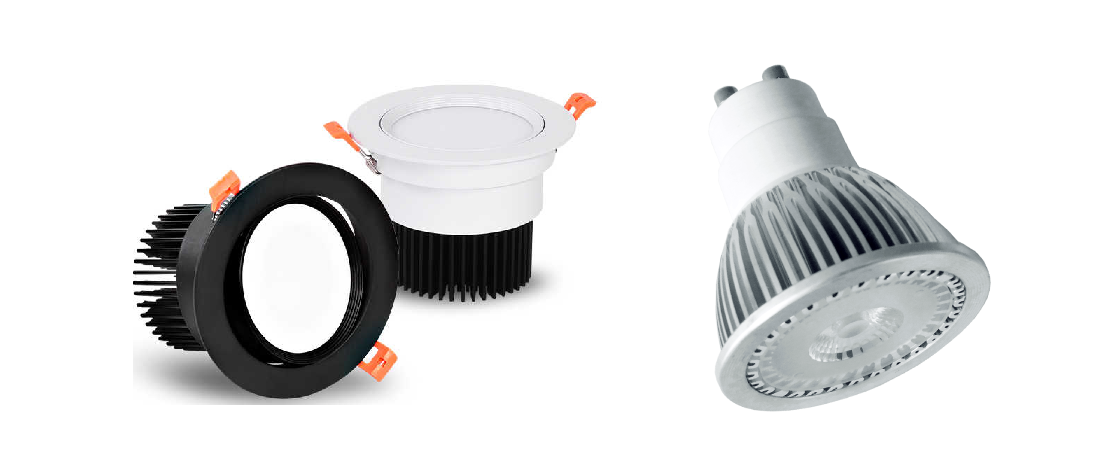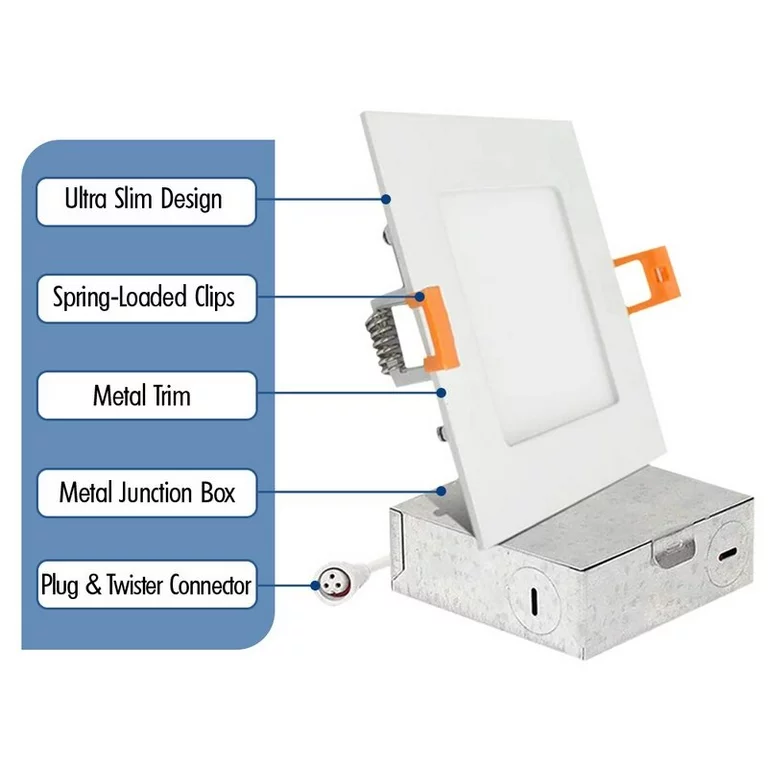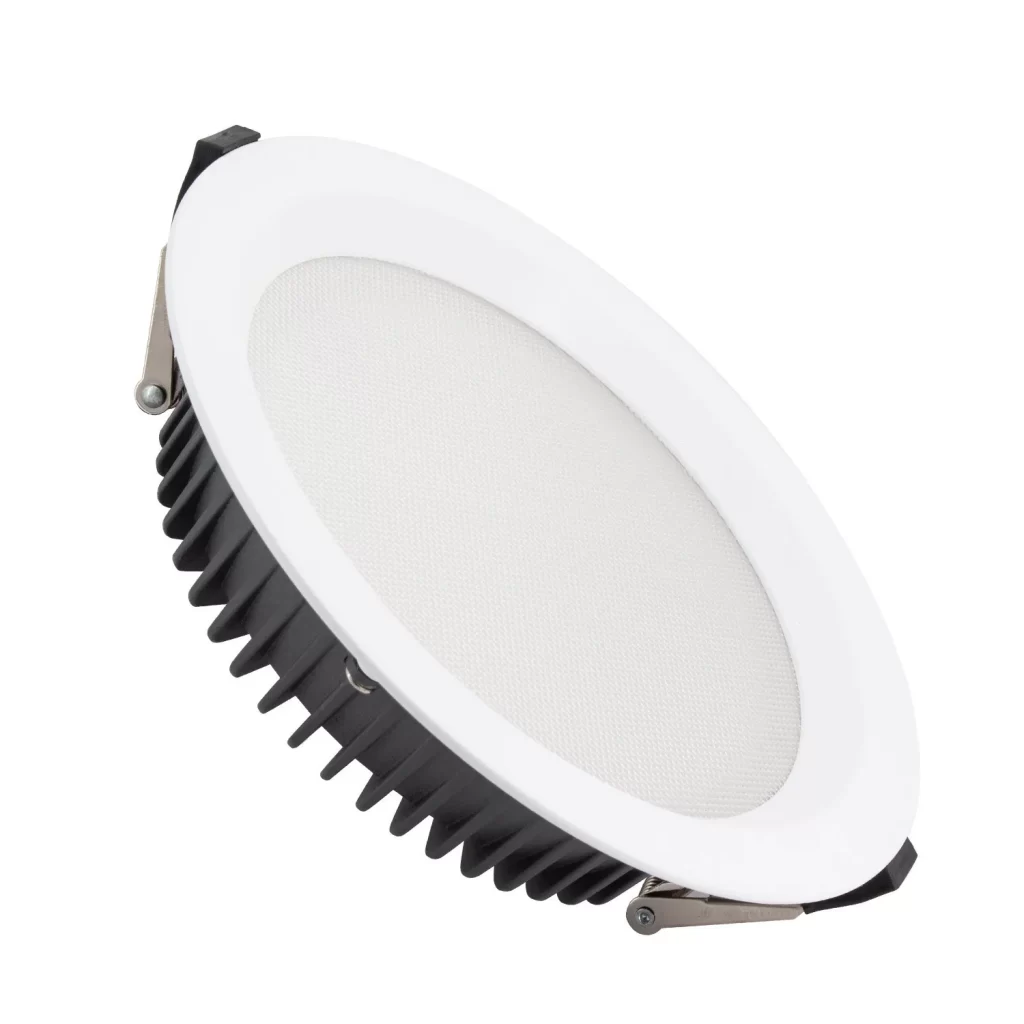
Explore common reasons why LED lights won’t turn on, from faulty wiring and incorrect installations to dead bulbs and power […]

The term “downlight” may refer to a variety of ceiling-mounted lighting fixtures; it can signify a “recessed light,” a “pot light” in Canadian English, or even what is called a “can light” when referring to canister lights.
Due to its fixation, the light shines downward from a hole in the ceiling, creating the illusion of either a narrow spotlight or a broad floodlight.

The recessed light fixture is generally made of a housing, trim, and bulb. The visible portion of the light is called the trim.
Looking inside the light fixture reveals the insert, and a thin line encircles the lamp’s perimeter.
The fixture’s housing contains the light holder and is fixed in the ceiling. One important consideration when choosing a bulb for a recessed lighting system is the amount of heat it produces.

LED lights are generally the most energy efficient types of recessed lights.
They have a much longer lifespan, lasting up to thirty times longer than other bulbs. Additionally, LED bulbs use around 80% less energy than fluorescent bulbs.
Light-emitting diodes (LEDs) perform much better in terms of heat dissipation. Incandescent lights release 90% of their electrical power as heat, whereas compact fluorescent lamps (CFLs) release only around 80%.
Compared to other types of illumination, the lifespan of LED devices is much longer.
Given its understated elegance and ability to blend in, recessed lighting has become an excellent choice for spaces that can not accommodate hanging lights.

In an open light fixture design, the bulk of the light source is hidden above the ceiling, instead of being suspended or surface mounted. It appears flush with the ceiling and therefore gives any room a more polished look.
Recessed lighting is unobtrusive and gives you a high degree of flexibility to adapt the light and ceiling to match your needs.. You can get a lot of light from a tiny space with recessed lighting and a dimmer, making it adaptable to meet your needs.
When it comes to quality and safety, recessed lighting is unrivaled. It will allow you to save money and energy. Not only do these lights ensure a wide coverage they also produce very little heat.
Their installation within the ceiling gives the impression of a larger room.
These are some of the benefits of choosing recessed lights over traditional lights:
You can conserve power using LED recessed lighting. One advantage of LED recessed lights is that they reduce energy consumption.
Aside from being energy efficient, LED lights are also incredibly less harmful to the environment. They use far less energy than incandescent lights yet still light up dark areas.
LED lights are resistant to rapid depletion and eliminate the need for frequent replacements and purchases, making them the most beneficial option in the long run.
You may also hire an electrician to install dimmer switches and other lighting controls, allowing you to save even more money on your power bills.
In the long run, the longer lifespan of LED lights makes them the more practical choice for reducing maintenance
Compared to incandescent bulbs, LED lights are more efficient, last longer, produce more accurate colors, and have a wider range of color temperatures.
Different lighting controls manipulate and switch light on only when necessary, allowing businesses to save money on energy and maintenance costs when integrating these technologies.
Advanced lighting control has been available since the introduction of light-emitting diodes and networked lighting systems.
Future developments in LED lighting will introduce new options, such as ensuring that lights, drivers, and controllers are compatible.
Adjusting the voltage in a circuit is what dimming is all about. It is common practice to use reverse-phase dimming when controlling the brightness of an LED light source.
As the voltage is progressively reduced through the circuit, drivers will find it much more manageable.
The discovery of reverse dimming followed the discovery of standard forward-phase dimming, also called TRIAC dimming, is achieved by removing the front “positive” and backward “negative” halves of the sine-wave.
The goal from the process is to make components, particularly actuators, last longer.
You don’t need a central light source like recessed wall lights or separate LED uplights to illuminate a room from below. By casting a soft, continuous light that may reach under surfaces and into hard-to-reach places, linear lights can be used to create varied outcomes.
The security and quality of recessed lights are unmatched and they will allow you to save money and energy. They also produce less heat, provide you with more space and give the impression of more room.
The 90 mm cutout is the standard for downlights. A 70-75 mm cutout will provide a more streamlined look, but it will be more challenging to install since your electrician will have difficulty getting their hand inside the hole to connect it.
Those with integrated LED drivers will have a 240V rating and can be hooked up straight to the 240V electrical supply.
Any LED light that doesn’t have an internal driver—also known as a low voltage light—will have a voltage rating of 12V or 24V and will need an additional LED driver or controller attached to the 240V power source.
In conclusion, the benefits and flexibility of this lighting system, uncovers a myriad of opportunities for enhancing spaces via improved efficiency and visual appeal.
Whether you’re seeking energy savings, a lively atmosphere, or a positive atmosphere, this solution is a great option.
To ensure a seamless transition to a more efficient and brighter future, it is recommended to contact competent professionals who can provide detailed information about the potential of this lighting innovation and proceed with the installation process, to get the most out of this game-changing lighting solution.
LED Brilliance Starts Here, Just $33. Shine Brighter, Save More!
Our Team of Experts Will Guide You Through The ESS Lighting Upgrading Process To Ensure You Achieve The Most Effective Energy Efficient Improvement Possible, GUARANTEED!
A Brighter Home, A Brighter Future!
Also read;